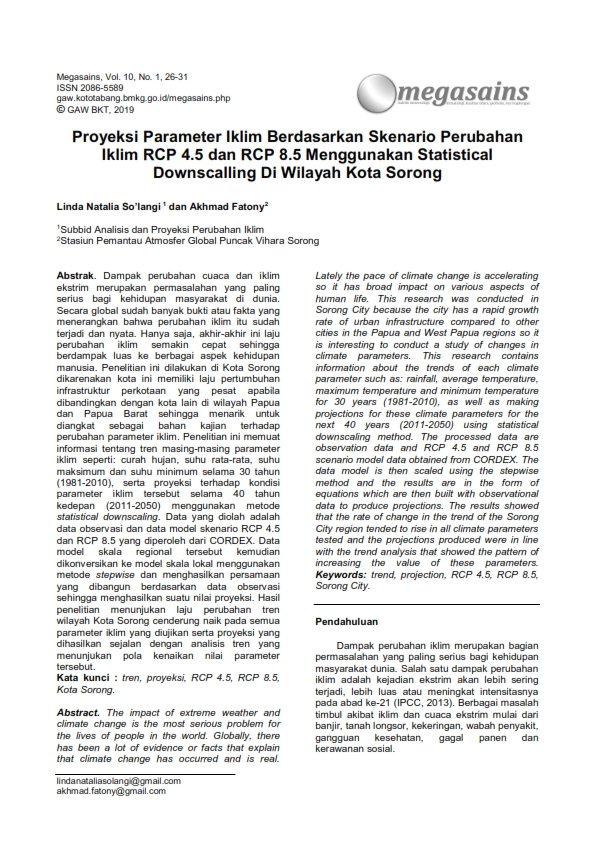Projection of Climate Parameters Based on RCP 4.5 and RCP 8.5 Climate Change Scenarios Using Statistical Downscalling in the Sorong City Area
Main Article Content
Abstract
The impact of extreme weather and climate change is the most serious problem for the lives of people in the world. Globally, there has been a lot of evidence or facts that explain that climate change has occurred and is real.Lately the pace of climate change is accelerating so it has broad impact on various aspects of human life. This research was conducted in Sorong City because the city has a rapid growth rate of urban infrastructure compared to other cities in the Papua and West Papua regions so it is interesting to conduct a study of changes in climate parameters. This research contains information about the trends of each climate parameter such as: rainfall, average temperature, maximum temperature and minimum temperature for 30 years (1981-2010), as well as making projections for these climate parameters for the next 40 years (2011-2050) using statistical downscaling method. The processed data are observation data and RCP 4.5 and RCP 8.5 scenario model data obtained from CORDEX. The data model is then scaled using the stepwise method and the results are in the form of equations which are then built with observational data to produce projections. The results showed that the rate of change in the trend of the Sorong City region tended to rise in all climate parameters tested and the projections produced were in line with the trend analysis that showed the pattern of increasing the value of these parameters
Article Details

This work is licensed under a Creative Commons Attribution-NonCommercial 4.0 International License.
The author is willing to retain the copyright and grant journal rights to the first publication with works that are simultaneously under license the Creative Commons Attribution-NonCommercial-NoDerivatives 4.0 International. It allowing the others to share the work with recognition of the author's work and the initial publication in this journal.
Authors can enter into separate additional contractual arrangements for the non-exclusive distribution of published versions of journal works (for example, posting them to institutional repositories or publishing them in a book), with recognition of the initial publications in this journal.
Authors are permitted and encouraged to send their work online (for example, in their institutional repositories or websites) before and during the submission process because it can lead to productive exchanges, as well as previous and larger citations of published works.

